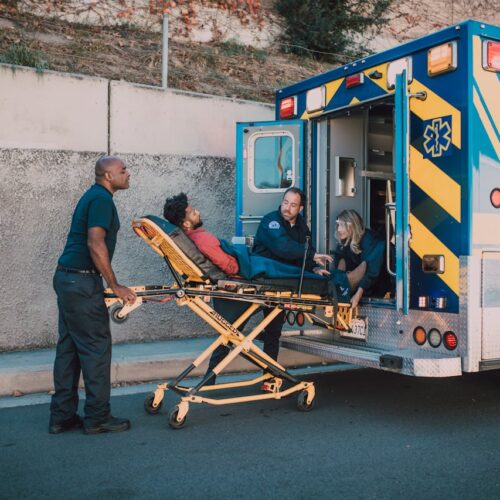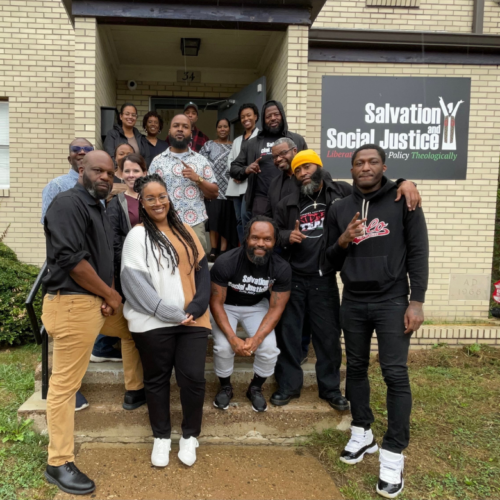San Diego and Imperial, CA, Counties Work to Enroll People Involved with the Justice System in Medicaid
In an effort to reduce recidivism and the public cost of emergency room visits by uninsured patients, two California counties—San Diego and Imperial—are using enrollment programs to increase access to Medicaid-covered physical and behavioral health services for people involved with their criminal justice systems.
Although the two counties share a border, their justice systems are vastly different. San Diego is an urban county with an estimated 14.7 percent of the population living below the poverty line. The county has approximately 5,000 people in its jails and more than 13,000 adults under probation supervision. Neighboring Imperial County is rural and 23.6 percent of its population lives in poverty. Imperial County averages a jail population of 500, and has fewer than 2,000 adults on probation.
Imperial County
In Imperial County, Catholic Charities—a faith-based nonprofit organization—runs a privately funded program that helps people involved with the justice system enroll in Medi-Cal, California’s Medicaid program.
Using a list generated by the county Sheriff’s Office, Catholic Charities’ enrollment program targets people who are one to three weeks from release from Imperial County jails. Enrollment assistance sessions take place every other week inside the county’s two jail facilities. For those who are released between enrollment sessions, support is available at the Catholic Charities office and at the Probation Department’s Day Reporting Center.
As a nonprofit organization, Catholic Charities does not have direct access to state or county Medi-Cal records, so it relies on staying in contact with the people it has assisted in order to monitor application outcomes.
Because Imperial County shares borders with Mexico, Arizona, and San Diego County, people in the county jail are often residents of other jurisdictions. Though it can offer little healthcare-related help to non-California residents, Catholic Charities’ reach does extend beyond Imperial County—the organization is able to help people who reside in San Diego County submit Medi-Cal applications.
San Diego County
San Diego County uses funding from a 2014 California Department of Health Care Services Outreach and Enrollment Grant to enroll adults who became eligible under the Affordable Care Act in Medi-Cal while they’re still in jail or under probation supervision.
As part of the enrollment process, people in jail who are Medi-Cal eligible are given the option to attend a class about Medi-Cal benefits and the application process. People who are within 60 days prior to release and in need of health insurance can then meet with an application assister from the Health and Human Services Agency (HHSA) or from community-based nonprofits like Vista Community Clinic and Family Health Centers of San Diego.
Application assistance is available at each of the county’s seven jail facilities, in hospitals where people serving jail sentences receive in-patient care, and at community-based organizations throughout the county for people who have already been released. For people on probation, HHSA social workers or contract staff are available for enrollment assistance at every San Diego County Probation Department office that serves adults.
“If it wasn’t for the close working relationships among our county departments and community-based partner organizations, these kinds of results wouldn’t be possible,” said San Diego Chief Probation Officer Adolfo Gonzales, who is also a former police chief and chief investigator for the County District Attorney’s Office. “From the beginning, the Probation and Sheriff’s Departments and County HHSA met regularly to set up the initiative and make sure it was off to a successful start. We’ve kept in touch and shared essential data all along the way, benefitting not only the county but the whole community.”
The County Probation Department tracks enrollment efforts through an online dashboard developed by HHSA, which collects data on application outcomes and benefit utilization for people on probation who are enrolled. HHSA tracks application statuses for everyone who received Medi-Cal application assistance, and follows applications even after the applicants are released from jail or complete probation.
Since the enrollment program began in June 2014, more than 5,000 of its participants have been approved for Medi-Cal coverage.
In response to growing calls for police reform in New Jersey, particularly following the shootings of Najee Seabrooks…
Read More Three Things to Know About New Jersey’s Groundbreaking Community Response Legislation
Three Things to Know About New Jersey’s Groundbreaking Community Response Legislation
In response to growing calls for police reform in New Jersey, particularly…
Read More Apply Now: Join a Learning Community for Community and Crisis Response Teams to Improve Responses to Youth
Read More
Apply Now: Join a Learning Community for Community and Crisis Response Teams to Improve Responses to Youth
Read More
 Apply Now: Join a Learning Community Focused on Substance Use and Overdose Community Response Programs
Read More
Apply Now: Join a Learning Community Focused on Substance Use and Overdose Community Response Programs
Read More













